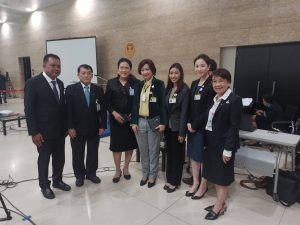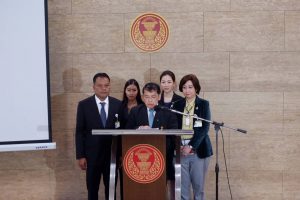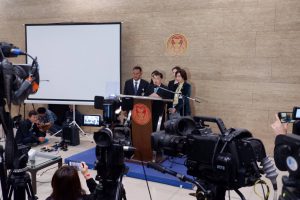The Ministry of Labour’s spokesperson reported that the Ministry of Labour has 3 measures to support termination when factories close, including surveillance before termination, post-termination, and in the long-term. He reiterated that data from the Ministry of Industry found that there are more newly opened factories than those that closed, by up to 88.0 percent, or almost double, while the Department of Employment has filled roles with 54,494 people.
On February 26, 2020, at 11.00 hours, the Department of Labour Protection and Welfare’s Director-General Mr. Apinya Sujarittanan reported the situation of factory shutdowns at the Parliament building. He said that from the Ministry of Industry’s data on February 24, 2020, according to the registration of factories under category 2 and 3 of the year 2019, it was found that although 1,689 factories were closed, 3,175 new factories opened. It can, therefore, be considered that there are more new factories than those that closed by up to 88.0 percent, or almost double. If the total number of factories which submitted for business expansion, the total number of factories is 4,303, which is 154.8 percent more than the closure of factories, or about 1.5 times more. The job placement of the Department of Employment was 54,494 people. According to the National Statistics Office, as of December 2019, there are 38.21 million workers, 37.66 million are employed, 367,000 are unemployed accounting for 1.0% unemployment, of which 24,200 are unemployed graduates, compared to December 2018, which had a total of 16,900 people.
The Ministry of Labour’s spokesperson said further that for measures to support the unemployed or those unable to find work, agencies under the Ministry of Labour have the following 3 measures:
- Surveillance measures, which include the 5 agencies under the Ministry of Labour to visit, monitor, inspect and reduce costs, such as reducing working hours or welfare benefits for employers and employees. It also includes reducing the number of employees, such as canceling recruitment, adding early retirement programs, to stop or reduce social security contributions, including the employer, if it is necessary to temporarily stop the business by using Section 75 of the establishment.
- Post-termination measures, such as eligibility, the maximum lay-off rate of 400 days, examining unemployment benefits, termination of employment in the case of an insurer under Section 33, registering as an insurer, matching job seekers and employers, skill development, career guidance, promote self-employment, including paying unemployment insurance from the Social Security Fund in case of termination, whereby 50 percent of the wage will be paid during an unemployment period of not more than 180 days per case. For the resignation or termination of employment contract, employees will be compensated with 30% of wages during unemployment for no more than 90 days at a time. In the case of unemployment due to force majeure, employees will be compensated with 50% of wages during unemployment for no more than 180 days at a time.
3. Long-term measures include in-depth analysis of data on labour demand from all sectors in the economy to get information for planning and disseminating about labour market information (LMI) to the public, such as the income of each profession, the unemployment rate of those graduating at various educational levels, the unemployment rate of bachelor’s degree graduates from each program and the shortage of workers in each professional field through easily accessible channels. It also looks to provide career guidance services and arrange career aptitude assessments, including employer coordination to prepare job vacancies to support the unemployed. It plans to increase courses to develop skills in accordance with the needs of employers, to increase employment opportunities such as mechatronics, CNC technology, PLC technology, automation technology, computer programming, design of hydraulic pneumatic control systems and foreign language skills for example.
Division of Public Relations
26 February 2020








